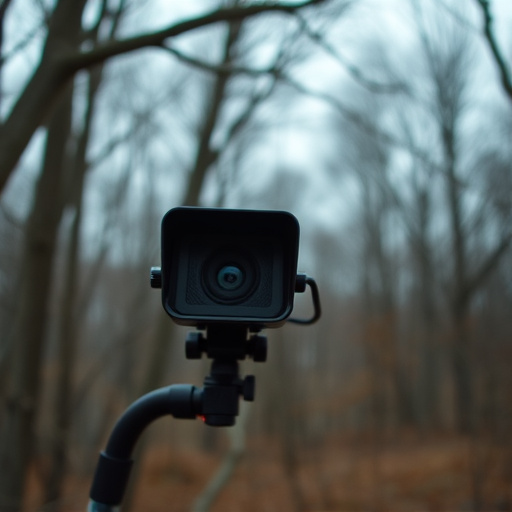RF (Radio Frequency) detector technology is a game-changer in countering hidden spy cameras with remote viewing capabilities, offering peace of mind against potential surveillance in both private homes and public spaces. By scanning for unique radio signals, these detectors reveal covert cameras, ensuring privacy and safety in the digital age. To use an RF detector effectively, conduct sweeps in controlled environments free from electronic interference, prioritize accuracy through multi-frequency coverage, and maintain equipment for optimal performance while respecting individual privacy and security.
Uncover hidden threats with our comprehensive guide to RF detector sweep hidden camera tutorial. Learn how RF technology detects spy cameras, enabling safe and efficient identification. From understanding the science behind RF detection to setting up remote viewing, this article covers it all. Discover advanced tips and precautions for professional-grade Spy Camera With Remote Viewing safety. Get equipped to navigate the digital landscape with confidence.
- Understanding RF Detector Technology for Spy Cameras
- Identifying and Locating Hidden Cameras with a Sweep
- Setting Up Remote Viewing: A Step-by-Step Guide
- Advanced Tips and Precautions for Safe Detection
Understanding RF Detector Technology for Spy Cameras
RF (Radio Frequency) detector technology plays a crucial role in identifying and detecting hidden spy cameras equipped with remote viewing capabilities. These devices operate by scanning for unique radio signals that such covert cameras emit, allowing users to uncover their presence. Spy cameras often utilize RF transmission to send video feeds to remote viewers, making them virtually invisible to the naked eye.
By employing specialized RF detectors, individuals can navigate through various environments, from homes to public spaces, and ensure they are not being surveilled without their consent. These tools have become essential for privacy advocates, security professionals, and anyone concerned about the potential presence of hidden spy cameras with remote viewing features, ensuring a sense of safety and peace of mind in today’s digital age.
Identifying and Locating Hidden Cameras with a Sweep
Identifying and Locating Hidden Cameras with a Sweep
In today’s digital era, spy cameras with remote viewing capabilities have become a common concern for privacy-conscious individuals and security professionals alike. Using an RF (radio frequency) detector sweep is one effective method to uncover these hidden devices. This technology works by scanning for electromagnetic signals emitted by the camera’s transmitter, which often operates on specific frequencies. By detecting these signals, users can pinpoint the location of the hidden camera, providing a crucial step in neutralizing potential privacy breaches.
RF detector sweeps offer an efficient way to navigate and secure spaces, especially in settings where discreet surveillance is a concern. They are versatile tools that can be employed in various scenarios, from checking private residences for hidden cameras with remote viewing capabilities to ensuring the integrity of public spaces. By employing this technology, individuals can gain peace of mind and take proactive measures against potential privacy invasions, effectively deterring the use of spy cameras with remote viewing features.
Setting Up Remote Viewing: A Step-by-Step Guide
Setting up a spy camera with remote viewing involves several simple yet crucial steps to ensure effective and discreet surveillance. Begin by selecting an appropriate location for your hidden camera, considering areas where potential targets are most active but also have good line-of-sight access for remote viewing. Once the ideal spot is identified, mount the camera securely, ensuring it’s stable and aligned correctly.
Next, connect the camera to a monitor or device capable of receiving and displaying its feed remotely. This could be a computer, smartphone, or tablet. Install any necessary software or apps that come with your spy camera kit, ensuring they’re compatible with your chosen viewing device. Test the connection thoroughly, checking audio and video quality, to ensure you can clearly see and hear what the camera captures in real-time.
Advanced Tips and Precautions for Safe Detection
When using an RF (Radio Frequency) detector for hidden camera sweeps, especially those with remote viewing capabilities, it’s crucial to employ advanced tips and precautions for safe detection. Always start your scan in a controlled environment free from external electronic devices that might interfere with your sensor’s accuracy. This includes turning off mobile phones, Wi-Fi routers, and other RF-emitting gadgets within range.
Remember that spy cameras with remote viewing can operate on various frequencies, so don’t limit yourself to one band. Use multi-frequency detectors designed to cover a wide range of RF signals. Additionally, be cautious when scanning in public spaces due to the potential presence of security systems. Maintain a safe distance from sensitive areas like government buildings or airports, where unauthorized detection could have severe consequences. Regularly calibrate your equipment and keep it maintained for optimal performance during each sweep.
The RF detector sweep hidden camera tutorial equips readers with essential tools and knowledge to detect and locate spy cameras, fostering a safer digital environment. By understanding RF technology, identifying unique signals, and implementing remote viewing, individuals can protect their privacy effectively. Advanced tips ensure safe detection practices, making it crucial for anyone concerned about hidden cameras in today’s tech-driven world. Remember that staying informed is the first step towards safeguarding your personal space from these clandestine devices, especially when it comes to Spy Camera With Remote Viewing.
